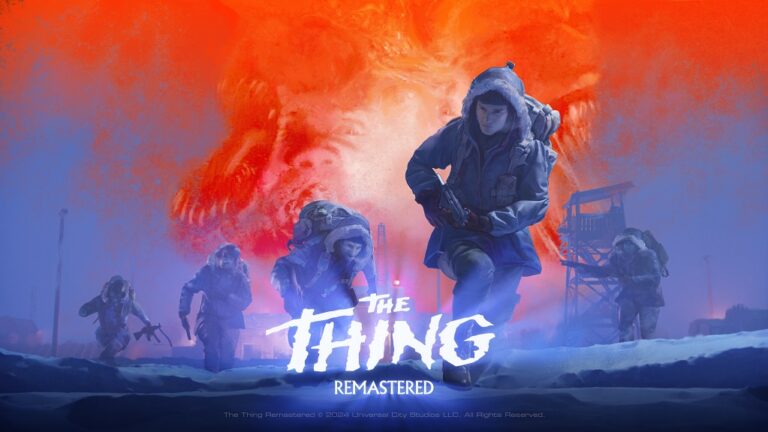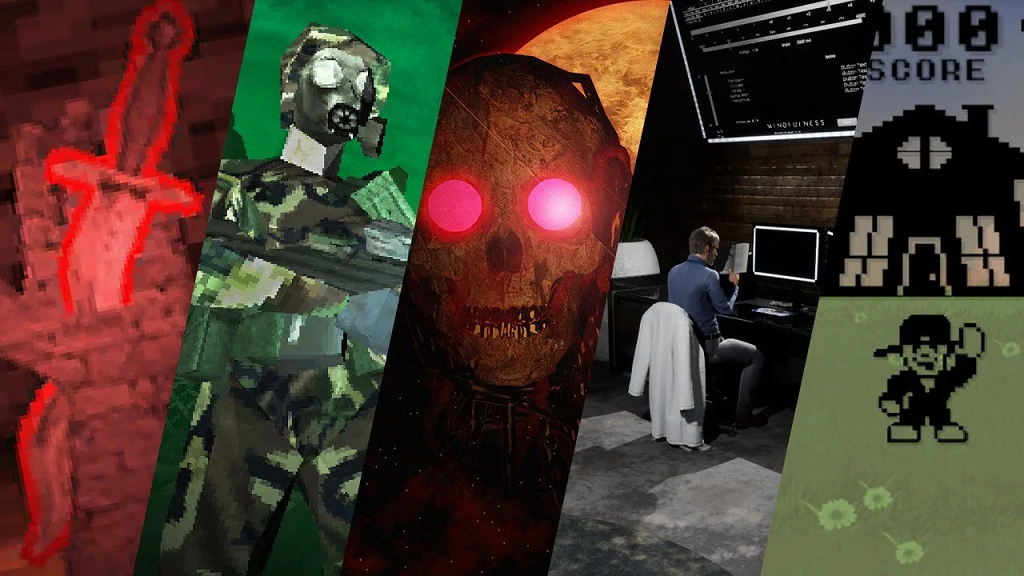
Dread X Collection is a new venture from DreadXP, the sister site of Dread Central, who has just dipped their hands into video game production. This collection brings together 10 up-and-coming indie horror developers for an anthology game where each developer brings their own style of horror with them, with all of the titles fitting into a larger meta-narrative that connects them.
The project was started in early April of this year, with each of the developers being approached with the concept of making their own playable “teaser” that can also stand on its own as an experience. Each developer had just 7 days to put together their game. This concept feels similar to a more curated version of a game jam, where many developers have a set time to create something short but interesting.
Each of the developers featured in Dread X Collection brings a completely different experience to the table with very different gameplay styles and horror themes, giving us a lot to explore here and with no two of them feeling too much the same. The game starts with the main menu, which lets you choose the game you’d like to start with, and you can play them in any order. Each game has a few pieces of meta-lore and background info in the menu before you launch the game itself, found by clicking on a picture frame or piece of paper that appears on a table.
After completing each game, the icon for that game appears on a mirror in the main menu. This mirror cleverly ties the games all together into a bigger back-story that you’ll learn about after finishing all ten, while also unlocking some final content at the very end.
After finishing all ten myself, here’s a personal review of each game within the collection.
_____________________________________________________________________________
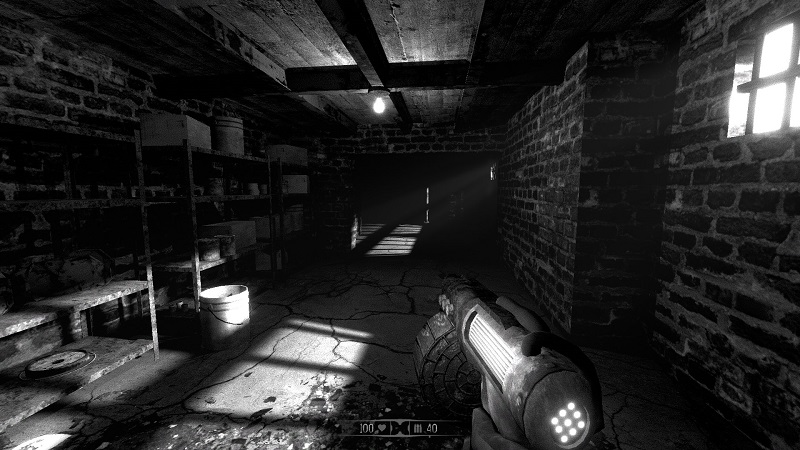
The Pony Factory by David Szymanski:
If you’ve played David’s most recent game, DUSK, you’ll have an idea of what to expect here, and I mean that as a very good thing. The Pony Factory is a first-person shooter, much like DUSK, but puts you inside an abandoned factory that creates hellish creatures out of horse carcasses and is full of tight corridors with very little light.
It presents several deep challenges which include very little health and ammo pickups, very strong enemies, and a mechanic where you must switch between your flashlight or your gun, not being able to use both at once. This system works brilliantly in creating tons of suspense and high-tension situations, making it so you rarely know what might be lurking around that next corner. Enemies are all strong, fast, and often use projectiles against you, making every encounter an exercise in precision dodging and visceral twitch-shooting in the style of Quake or Doom.
The Pony Factory feels great to play and never lets up until the very end. This experience will easily take an hour or two on your first try to complete, if not even longer, based on the difficulty. It’s one of the longer experiences contained in the collection and one of the most satisfying. It also includes several other modes: an easy mode and several challenge modes that make the game even harder (for those who want to sink into the world even more).
Szymanski has managed to create a fantastic game experience in just a few days, with little resources, cementing his place as one of the best horror devs out there today. This collection is definitely worth buying, even if just to experience The Pony Factory, and yet there are still nine other games left to discuss here!
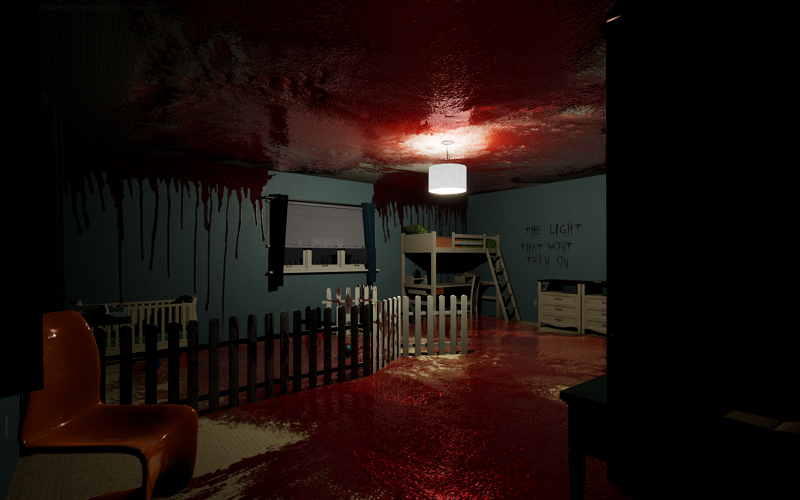
The Outsiders by Mahelyk:
The Outsiders starts in a bedroom with the game telling you that you wake up at the same time every night and can’t figure out why. The gameplay is that of a first-person escape room puzzle game with some very complex and compelling mysteries to solve as you attempt your escape from this house.
After a certain time each night, the lights in the house will go out one at a time and you’ll face a terrifying unseen attacker until you die. Each time after you die, you wake up in the same room again, but small clues will be left around the house, more clues with each time you die, leading you closer to figuring out the mysteries of your situation.
You’ll use all sorts of tools, keys, and pieces of information to start solving each puzzle one by one. The objective is to solve all of the puzzles in the house before that time of the night comes where you lose all power and lights, leaving you completely vulnerable to the shrouded assailant.
Going into the cornfield behind the house was one of the tensest and most terrifying experiences I’ve had in gaming lately, and a feeling of dread came over me every time I got ready to go back there. Strange figures quickly move by your line of sight before you can even make out what it is. All the while, terrifying sounds come from every direction as you try to navigate a very complex puzzle to find what lies hidden in this field. I felt so compelled to solve the mysteries behind this strange situation that I couldn’t stop playing until I finally managed to figure it all out. The feeling of unraveling one more mystery each time I played was so satisfying that it kept me coming back for more.
This is absolutely one of the best experiences in the collection and one I wouldn’t pass up, even if it takes you many tries to finish. The ending is a pretty big surprise and a change of pace, focusing on a very specific type of fear, which left a big impression on me.
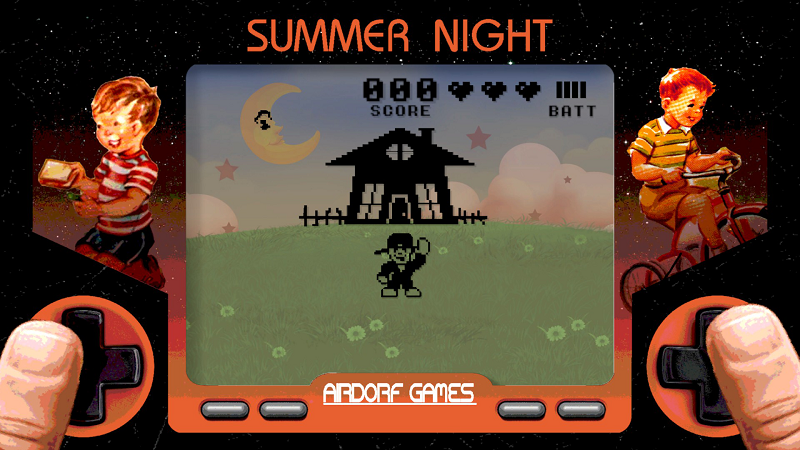
SUMMER NIGHT by Airdorf:
SUMMER NIGHT is the new game from FAITH developer, Airdorf, and is certainly a unique one here, as it takes the form of an old Tiger LCD handheld game from the ’80s. While the LCD game actually does manage to be tense and frightening in its own way, the sound design adds another layer of strangeness to the experience. As you keep playing the game, you hear strange sounds happening around you, outside of the LCD game. As the batteries on the game get lower and lower, the sounds get stranger and closer. Once your batteries run out, you’ll be in for one hell of an experience afterward, which I won’t spoil for you, as you should experience it for yourself.
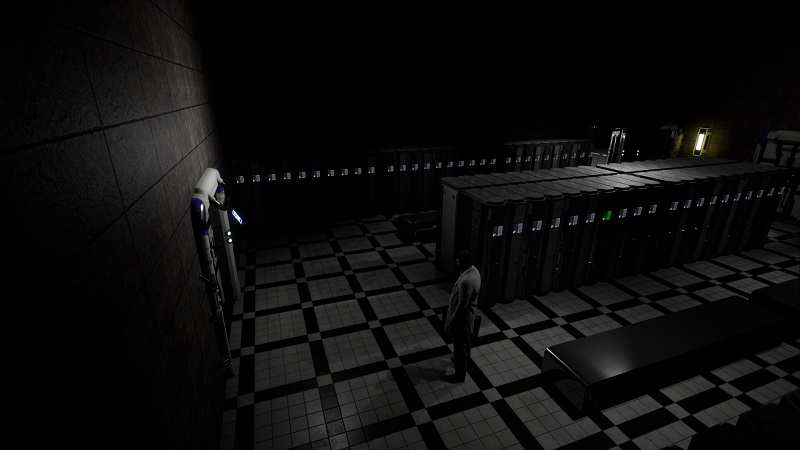
The Pay is Nice by Oddbreeze Games:
The Pay Is Nice is a short 3rd person “walking sim” with fixed camera angles, playing like the original Resident Evil games without combat or puzzles, incorporating dystopian and social commentary elements throughout. There’s a strong narrative that questions how harmless a lot of the “scientific research” that’s done in today’s world really is, which is a nice touch. Another major theme of the story here is how hard some people work to convince themselves that their job which makes their life miserable is “just a job” in an attempt to still sleep at night. This ended up being scarier and deeper than I thought it would be and is another one of my favorites from the collection.
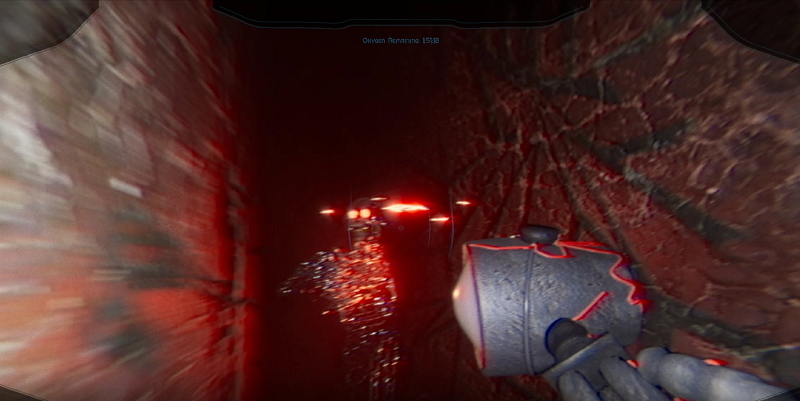
Carthanc by Scythe Dev Team:
Scythe Dev Team’s Carthanc is an experience dripping in sci-fi terror, similar to entries from the Alien series, Dead Space, or Event Horizon. It plays out as a first-person puzzle-platformer where you play as a space explorer/archaeologist who is exploring the ruins of an ancient civilization in a strange and dark temple. Equipped only with your camera and a portable tripod light, you must solve the mystery of this temple by following clues and escaping various traps and terrifying chase enemies. The visual and sound design is really well done here and had me sitting on the edge of my seat the whole time.
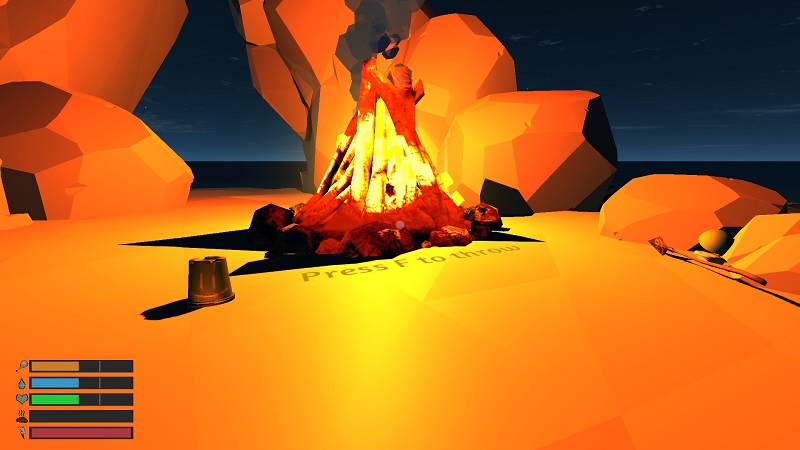
Mr. Bucket Told Me To by Strange Scaffold:
Strange Scaffold’s bizarre little game Mr. Bucket Told Me To definitely stands out among the rest, in that it’s a first-person survival game, complete with health and food meters, set on a deserted island after a plane crash. While the survival elements end up being pretty light and inconsequential by the end of it, it’s more a means to follow the story, which is one of the more light-hearted ones in this collection. You can think of this as a playable version of the movie Castaway, except Wilson the volleyball and all the other inanimate objects you possess there want to kill you in your sleep. It takes some strange and dark turns along the way and ends up being a fun tale.
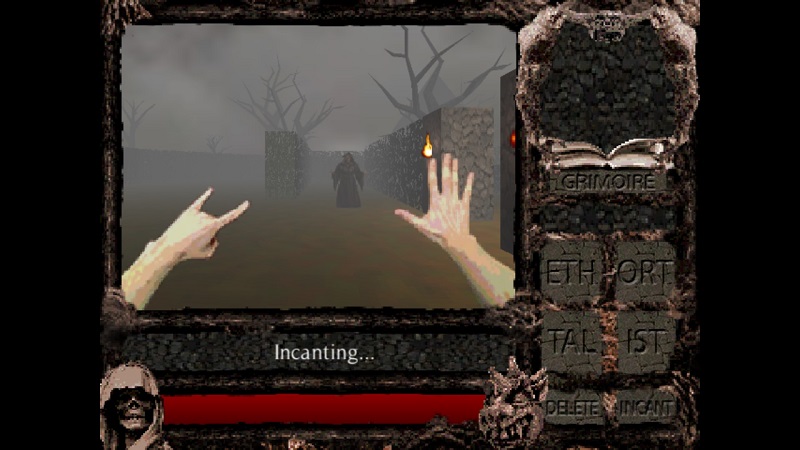
Hand of Doom by Torple Dook:
Hand of Doom is a cool throwback to the days of early-3D first-person dungeon crawlers like Might and Magic or the early Elder Scrolls games, but with some interesting twists. The game is heavily horror-themed, with creepy music and visuals throughout, and the main mechanic involves chanting and casting incantations in real-time using a set of spoken syllables. By learning and casting the various incantations, you work your way through a short story that involves being trapped in a dark and hellish world by an evil magician, finding out by the end that this world will be much harder to escape than you thought.
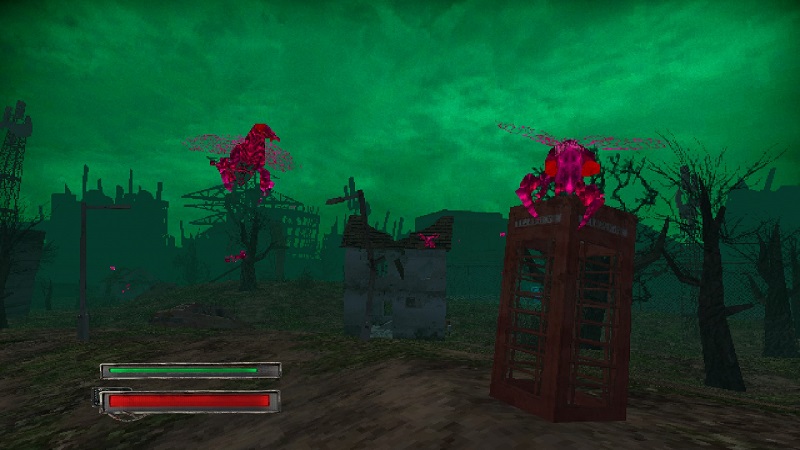
Shatter by Lovely Hellspace:
Lovely Hellspace’s Shatter is a strange mix of a few game styles that becomes a very compelling experience by the end. It’s a first-person post-apocalyptic exploration game (not too removed from Fallout series) where giant insect overlords have taken over the world, done in a PS1 low-poly visual style. The gameplay is largely dialogue and collection-based but also features a terrifying mechanic where the world shifts into a creepy “other-world,” (not unlike that of Silent Hill) where you’re chased by insect enemies who can kill you and send you back to the beginning. Shatter left me wanting a much longer game by the end, which is a pretty big compliment to its success.
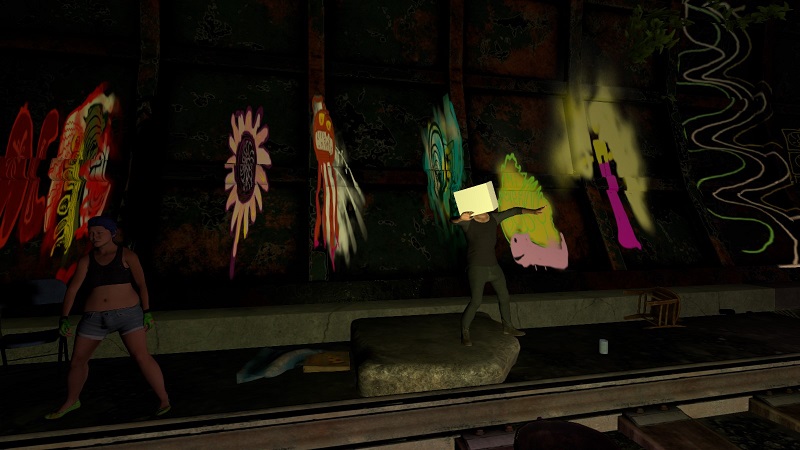
Rotgut by Snowrunner Productions:
The best way I could describe Rotgut is that it’s a first-person video game where you experience a really bad drug trip and all the horrors that come along with it. These include time actively warping around you, creepy visions of things that are not there, and all kinds of weird symbolism that just makes you want nothing more than to get out. Coming from the creator of Soda Drinker Pro, it’s no surprise this game attempts to make you feel all sorts of uncomfortable in many unconventional ways, and by the end of it, I felt it succeeded at its goal.
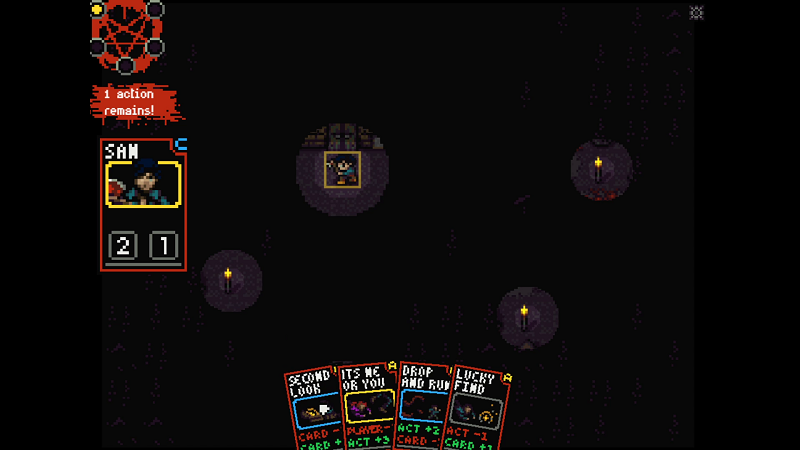
Don’t Go Out by Secret Cow Level:
Don’t Go Out is a horror game unlike most we’ve ever seen, where it mixes tactical RPG grid-based gameplay with a card-based action system. The objective is to survive a certain number of hours until dawn. It was confusing at first, with many elements of the system not explained in a tutorial, but once I grasped how it all worked, it started to sink in. The visuals and audio are great, with 16-bit pixel art and matching music, sounding straight out of the original Clock Tower — setting the mood very well. After several tries, I managed to reach the end and fully grasped what the game was offering, leaving me pretty satisfied.
_____________________________________________________________________________
For many of the games included in the Dread X Collection, part of the experience involves learning how the gameplay systems work. These short-form games don’t feature long tutorials and instead leave you to a bit of trial and error to figure it out for yourself. This adds an extra level of a “puzzling” overall, and it’s something I appreciate. Too many modern games hold your hand through every detail of what to expect, and in turn, taking away some of the surprises. The subversion of expectation is especially beneficial in horror games.
For the $7 price of admission, Dread X Collection provides a breadth of different experiences, each having a distinct vision from its respective creator. If you’ve enjoyed previous games from any of the developers involved, this collection is well worth your time. Even if you haven’t, this release introduces many new creators you should probably be aware of. Finishing all the unique horror games here will likely take you around 10-15 hours, which ensures you get more than your money’s worth. This collection just further proves something I’ve known for a long time; you don’t need huge teams with massive budgets to create the types of horror games that make you feel a palpable sense of fear from behind a controller. Dread X Collection is a title that indie horror fans will not want to miss.
 (8.5 / 10)
(8.5 / 10)
Great
 (8.5 / 10)
(8.5 / 10)Rely on Horror Review Score Guide
A Steam review copy was provided by the developer.
Disclosure: The owner of DreadXP is a Patreon subscriber of Rely on Horror. This has no bearing on our coverage.


